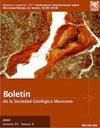墨西哥前西班牙裔和殖民地土坯的比较研究。粒度分布和再生材料在土建筑国家保护中作用的初步推断
IF 0.4
4区 地球科学
Q4 GEOLOGY
引用次数: 0
摘要
对墨西哥建筑中使用的前西班牙裔和殖民地土坯进行了表征,以了解其工艺和制造之间的差异。所获得的八个样本对应于0.45米长、0.35米宽、0.12米厚的土坯块,这些土坯块是房屋内部、围栏结构和庄园厨房的一部分。使用X射线衍射、X射线荧光和扫描电子显微镜技术对这些样品进行了研究,以确定材料的形态计量学及其化学和矿物学组成。同样,进行了一些分析,以确定它们的机械性能(简单抗压强度)、物理性能(粒度、固体密度、内聚力、塑性指数、孔隙率和水分含量)和生物性能(有机物含量)。根据粒度分布获得的结果表明,前西班牙裔土坯的沙子含量高于粉质粘土和砾石,而殖民地土坯的砾石含量较低或为零,粉质粘土含量较高。就有机物含量而言,与前西班牙裔土坯相比,殖民时期的土坯所占比例最高。考虑到上述情况,前西班牙裔土坯比殖民地土坯具有更好的抵抗力和耐久性,因为它们的粒度分布、低有机质含量、良好的内聚性、高塑性指数,并且使用了在其自然环境中发现的材料,而殖民地使用的是来自庄园致力于的经济活动的回收材料,例如,农业、采矿业、畜牧业,这产生了不同的制造技术和建筑风格,反映了整个前西班牙裔和殖民时代的建筑保护状况。前西班牙裔土坯的粒度分布为任何施工技术提供了良好的物理和机械质量,因此建议使用该配方制造耐腐蚀、耐用的土坯。本文章由计算机程序翻译,如有差异,请以英文原文为准。
Comparative study of pre-Hispanic and colonial adobes in Mexico. Preliminary inferences on the effects of the granulometric distribution and used recycled materials in the state conservation of earth architecture
The characterization of the pre-Hispanic and colonial adobes used in the construction of buildings in Mexico was carried out to know the differences between their processes and manufactures. The eight samples obtained correspond to adobe blocks 0.45 m long x 0.35 m wide and 0.12 m thick, which were part of the interiors of houses, the structure of fences, and hacienda galleys. These samples were investigated using X-ray Diffraction, X-ray Fluorescence, and Scanning Electron Microscopy techniques to determine the morphometry of the material and its chemical and mineralogical composition. Likewise, some analyzes were performed to determine their mechanical properties (simple compressive strength), physical properties (granulometry, solid density, cohesion, plasticity index, porosity, and moisture content), and biological (organic matter content). The results obtained in terms of the granulometric distribution indicate that pre-Hispanic adobe has a higher content of sand than silt-clay and gravel, while the colonial adobes present a low or null content of gravel with a higher content of silt-clays. Regarding the organic matter content, the colonial adobe presents the highest percentages compared to those of the pre-Hispanic adobes. Taking into account the above the pre-Hispanic adobes have better resistance and durability than colonial adobes due to their granulometric distribution, low organic matter content, good cohesion, high plasticity index, and the use of materials found in their natural environment, while the colonial used recycled materials, coming from the economic activity to which the hacienda was dedicated, for example, agriculture, mining, livestock, this has given rise to different manufacturing techniques and construction styles that reflect the state of conservation of buildings throughout the pre-Hispanic and colonial times. The granulometric distribution that pre-Hispanic adobe provides favorable physical and mechanical qualities for any construction technique, so it is recommended to use this formula to manufacture resistant and durable adobe.
求助全文
通过发布文献求助,成功后即可免费获取论文全文。
去求助
来源期刊
CiteScore
1.40
自引率
12.50%
发文量
34
审稿时长
50 weeks
期刊介绍:
The Boletín de la Sociedad Geológica Mexicana is a completely free-access electronic journal published semi-annually that publishes papers and technical notes with its main objective to contribute to an understanding of the geology of Mexico, of its neighbor areas, and of geologically similar areas anywhere on Earth’s crust. Geology has no boundaries so we may publish papers on any area of knowledge that is interesting to our readers.
We also favor the publication of papers on relatively unfamiliar subjects and objectives in mainstream journals, e.g., papers devoted to new methodologies or their improvement, and areas of knowledge that in the past had relatively little attention paid them in Mexican journals, such as urban geology, water management, environmental geology, and ore deposits, among others. Mexico is a land of volcanos, earthquakes, vast resources in minerals and petroleum, and a shortage of water. Consequently, these topics should certainly be of major interest to our readers, our Society, and society in general. Furthermore, the Boletín has been published since 1904; that makes it one of the oldest scientific journals currently active in Mexico and, most notably, its entire contents, from the first issue on, are available online.

 求助内容:
求助内容: 应助结果提醒方式:
应助结果提醒方式:


